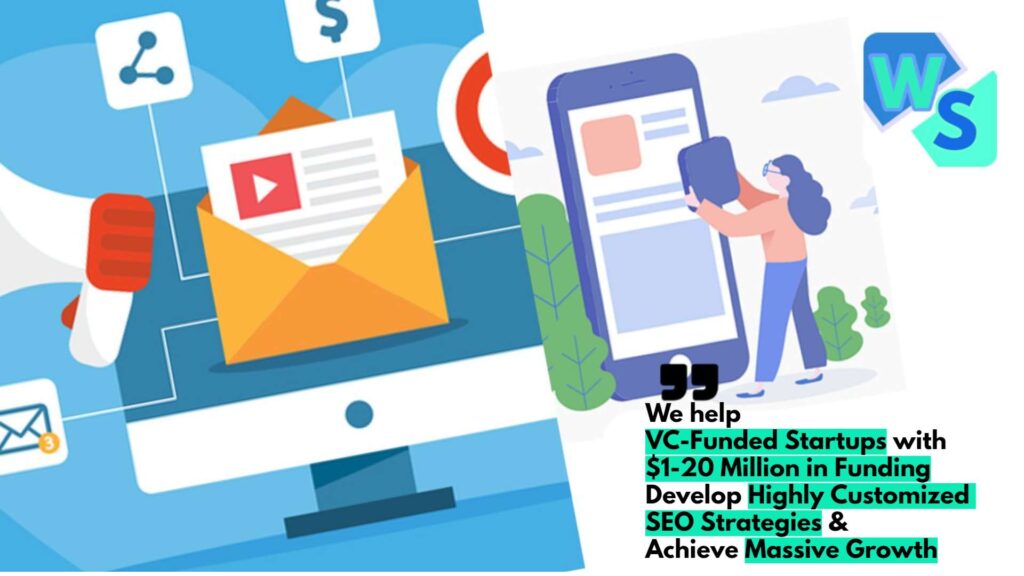Building a Nonprofit Marketing Plan
Getting a solid marketing plan in place is no minor task for nonprofits wanting to boost their reach and rake in donations. This plan’s your trusty GPS, guiding all marketing hustle with purpose and focus.
Importance of a Marketing Plan
A nonprofit marketing plan breaks down the best ways an organization can shine a spotlight on its mission, happenings, and campaigns. The trick is zooming in on certain groups of donors and hitting ’em through different marketing ways. According to OneCause, this kind of strategy keeps things neat, gets everyone on the same page, and makes sure all marketing sings the same tune.
With how wacky modern marketing is—thanks to too many channels and messaging tricks—a marketing plan’s become essential. You need to know who’s the target and what’s the aim, or else marketing can end up being a hot mess (FreeWill).
Benefits of a Nonprofit Marketing Plan:
| Benefits | What’s That? |
|---|---|
| Clarity | Sets out clear goals and game plans for spreading the word. |
| Organization | Lays down a plan for what marketing does what and when. |
| Team Togetherness | Ensures everyone knows the mission and grooves to the same beat. |
| Boosted Promo | Levels up the way you shout about events and campaigns. |
Crafting a Strategic Framework
Honing a marketing plan doesn’t come easy-peasy—it needs careful thinking and a bit of time. Getting a strategic framework nailed down is key for setting out essential bits like goals, funds, and who you’re talking to. Research shows plans can be as small as pushing a single event or as grand as supporting a whole campaign (FreeWill).
A tight framework covers:
- Objectives: Knowing what clear, countable things the nonprofit wants to get done.
- Audience: Knowing who you’re talking to so every message hits home.
- Budget: Smartly spreading out resources across options like social media marketing and email marketing tips.
- Channels: Picking the right platforms, be it digital, old-school media, or video marketing.
With a rock-solid framework, no more winging it—there’s a better shot at hitting those fundraising and outreach targets. A thought-out marketing plan lays the groundwork for smashing fundraising campaigns and nailing down the right folks. If you’re curious, check out marketing case studies for some cool real-world examples.
Understanding Nonprofit Audiences
Nonprofits thrive when they really get who they’re talking to. Nabbing the right folks means they’re more likely to chip in or spread the word.
Audience Segmentation Strategies
Breaking down who you’re reaching is classic nonprofit magic. You’ve got to classify people into groups that share common interests. Think donors, volunteers, business pals, and just regular folks who care about your cause.
Check out this table with some cool ways to sort things out:
| Audience Type | What to Look For |
|---|---|
| Donors | How often they give, what they’re into |
| Volunteers | What they’re good at, when they can help, why they care |
| Community Members | Their connection to you, where they come from |
| Corporate Partners | What biz they’re in, their do-gooder goals |
The smarter you start with clear goals, the better you nail down your audience. Use what you know about them—age, hobbies, habits—to make your message stick (Fifty & Fifty). If you’ve got the scoop, your outreach will hit home.
Impact of Diverse Audiences
You know what makes a nonprofit rock? Clicking with all kinds of people. Whether you’re smoothing the way for new sponsors, drumming up corporate buddies, or getting the word out about what you do, it’s all about building those bridges. Effective connections mean you can do more good and keep moving towards that mission of yours (Fifty & Fifty).
To keep momentum going, nonprofits need to think long-term, making sure their campaigns are in line with the big picture. With the right moves and messages, you can rally supporters, bring in more helping hands, and connect with your community. Want more cheat codes? Dive into our write-ups on nonprofit marketing strategies and digital marketing for nonprofit organizations.
Creating Target Audience Personas
Figuring out who’s going to vibe with your nonprofit is a biggie when it comes to nailing those marketing moves.
Developing Donor Personas
So, what’s the deal with donor personas? Think of them as little make-believe folks that represent your ideal supporters, like daydreams but in a practical way. By knowing who throws cash your way, you can tailor those pitches to hit just right. This is about making chats that feel personal and forming bonds that make peeps want to stick around.
| Donor Persona | Characteristics | Motivations | Preferred Communication Channel |
|---|---|---|---|
| Philanthropic Professional | Got some cash to splash, work-focused, digs making a difference | Wants to give back, hungry for real impact | Email, Hangouts like Fundraising Events |
| Community Member | Local vibe, middle income, likes getting stuck in with local stuff | Feels close to local causes | Social Media, Newsletters |
| Young Activist | All about change, planet-loving, glued to their phone | Pushing for change, caring for the planet | Social Media, Quick Texts |
When you split your audience like this, suddenly reaching out feels way more on point. Want more scoop on this? Check our piece on nonprofit fundraising campaigns.
Tailoring Messages for Volunteers
Donors not your only audience—volunteers are the unsung heroes in the wings. Craft a persona for them too, and you’ll be speaking their language. Volunteers stick around when you know what makes them tick.
| Volunteer Persona | Characteristics | Motivations | Preferred Communication Channel |
|---|---|---|---|
| College Student | Hungry for experience, dipping toes into community service | Wants skills, looks for opportunities, needs community service hours | Social Media, Campus Hangouts |
| Retired Professional | Got experience, surplus time, loves giving back | Likes sharing know-how, bonding with the community | Email, Community Notice Spots |
| Family-Oriented Volunteer | Parents with kiddos, loves family outings | Seeks family fun, new pals | Family Events, Local Meet-Ups |
Roll out those personas in your talks and volunteering calls, and you’ll see better turnouts. Personalizing your chats can make a difference in keeping volunteers jazzed. For more on this, have a peek at our article on nonprofit social media marketing.
By laying out donor and volunteer personas, not only do you sharpen your engagement strategies, but you also make sure your campaigns sync with what folks are all about. Want more? Dive into our pieces on nonprofit email marketing best practices and nonprofit influencer marketing.
Key Ingredients of a Marketing Plan
Making a nonprofit marketing plan that actually works—now that’s a mission. It’s like cooking a recipe, and two of the secret spices are setting clear goals and picking Key Performance Indicators (KPIs) that can be tracked. These two bits are the game-changers in connecting with your audience and figuring out how much of a splash you’re making.
Setting Clear Goals
The heart and soul of any nonprofit marketing plan lie in setting goals you can see from a mile away. These aren’t just any goals; think of them as your North Star, guiding everything from outreach strategies to deciding if you nailed it or missed it. A top-notch goal should be nailed down, meaning it’s specific, measurable, achievable, relevant, and time-bound—aka SMART goals.
Here are a few scenarios that might sound familiar:
| Goal Type | Example Goal |
|---|---|
| Keep Donors Coming Back | Boost donor retention by 20% over the next year. |
| Campaign Join-Ups | Get at least 500 people to join in the annual fundraising walk. |
| Volunteer Sign-ups | Bring 50 new helping hands on board for upcoming gigs by the quarter’s end. |
Hammering out these goals keeps the marketing game strong, tying efforts to what the nonprofit is all about (OneCause). This means staying on the ball and making sure resources aren’t wandering off course chasing meaningless tasks.
Picking Trackable KPIs
Once goals are on the whiteboard, it’s time to figure out the KPIs that’ll whisper in your ear about how things are going. KPIs are like those little green check marks telling you if you hit the target, offering clues about what’s working and what might just be smoke and mirrors. Check out these usual suspects:
| KPI | Description |
|---|---|
| Money Raised | Total cash raked in during a campaign or fiscal period. |
| Who’s Visiting | Unique folks dropping by the nonprofit’s website—a hint of who’s interested. |
| Social Buzz | Number of likes, shares, and comments on social media—a peek into audience chit-chat. |
| Volunteer Turnout | Count of folks rolling up their sleeves to help in events or programs. |
With KPIs as your compass, it’s easy to see if the goals are in sight and whether it’s time to shift gears a bit. Measuring correctly lets nonprofits tune their talks and amplify their echo effectively. For a deeper dive into engaging folks in nonprofit causes, you might wanna check out our piece on nonprofit marketing strategies.
Implementing SMART Goals
Setting SMART goals is a key step in creating a successful nonprofit marketing plan template. This method makes sure your marketing plans are clear, measurable, and doable, which can really boost donor excitement and fundraising success.
Specific and Achievable Goals
Specific goals spell out exactly what you’re aiming for. Instead of saying, “Increase donor engagement,” you say, “Boost recurring donors by 20% in six months.” This gives the nonprofit marketing team a clear path to follow.
Achievable goals mean setting targets that are realistic with what you’ve got. Aim high, but keep it reachable, to keep the team fired up. Nonprofits can use past successes and industry standards as a guide to set goals that are within reach.
| Goal Type | Example | Description |
|---|---|---|
| Specific | Increase recurring donors by 20% | Clearly outlines the target number and type |
| Achievable | Secure $50,000 in donations within six months | Sets a realistic financial target based on past data |
Relevant and Time-Bound Objectives
Relevant goals match up with the nonprofit’s mission, so every target hits a broader strategy. Like, “Grow our outreach to 300 participants” really matters if it’s about helping the nonprofit connect with the community.
Time-bound objectives set a clock on your goals, making sure there’s a push to get things done. Like, “Kick off a new email campaign by the end of Q2” gives a deadline and helps the team move into action.
| Goal Type | Example | Description |
|---|---|---|
| Relevant | Expand outreach to 300 participants | Aligns with the organization’s mission |
| Time-Bound | Launch a marketing campaign by Q2 | Establishes a clear deadline for completion |
By setting SMART goals, nonprofits can zero in on their marketing efforts right. When you mix in measurable targets with timelines, it’s easier to track performance and see real results in your strategies. Want to dig deeper into lifting your nonprofit marketing efforts? Check out our sections on nonprofit marketing strategies and find ways to make the most of nonprofit social media marketing.
Evaluating Marketing Campaigns
Checking out marketing campaigns isn’t just a “nice-to-have” for nonprofits—it’s a must-do if they’re aiming to boost outreach and rake in more funds. By digging into past adventures, these organizations can pick up golden nuggets of wisdom to fine-tune their future plans. This section looks at diving into marketing audits and learning from past campaign wins and losses.
Conducting a Marketing Audit
A marketing audit is like hitting pause to give past campaigns a good once-over. Think of it like giving your car a full check-up. It involves checking out the strengths, weaknesses, chances, and threats (yup, that’s SWOT) that come with current marketing maneuvers. By doing this, nonprofits can zero in on things that need work and hunt for fresh growth chances. This structured snoop-around helps in polishing up future strategies (according to this handy guide: Getting Attention).
Here’s a sneak peek at what a marketing audit digs into:
| Audit Component | What It Means |
|---|---|
| SWOT Analysis | Looks at what’s working, what’s shaky, cool chances, and not-so-cool threats. |
| Goal Assessment | Checks if the goals from the last campaigns were hit or missed. |
| KPI Review | Breaks down the numbers like box office hits to see what rocked and what needs work. |
Tweaking marketing plans with these audit nuggets means resources won’t go to waste, and marketing becomes super-efficient (Nonprofit Marketing Guide).
Leveraging Past Campaign Insights
Peeking into past campaigns gives nonprofits a cheat sheet for the future. It’s about figuring out what scored touchdowns and what flopped, then cooking up new plans with those lessons. For instance, if emails got the town talking, that’s a hint to step up the email game (WildApricot).
Take a look at how some lessons can shape future plans:
| Insight | What to Do Next |
|---|---|
| Email campaigns worked well | Use email marketing tips to spice up content and tailor lists. |
| Social media flopped | Spruce up social media tactics with jazzy content and catchy promos. |
| Donors keep coming back | Keep telling stories that show how donations make a difference to keep that love alive. |
Giving past campaigns some attention and love helps nonprofits make solid choices, boosting how donors pitch in and getting better bang for their buck (Digital Marketing for Nonprofs). When nonprofits learn from what they’ve done before, they’re way more likely to crush their goals and connect with the community.
Measuring Marketing Success
Measuring how well your nonprofit’s marketing efforts hit the mark is key to knowing what’s working and what could use a little tweaking. Folks like nonprofit directors, the fundraising crew, and everyone involved in outreach should have some solid tactics to figure out if their campaigns are knocking it out of the park or not.
Utilizing KPIs for Tracking
Key Performance Indicators (KPIs) are like that helpful friend who points out if you’re on the right path or wandering off. For nonprofits, these KPIs should zero in on the basics like how busy things are, how far your message spreads, how much folks are interacting, and ultimately, the impact you’re making. Depending on what your campaign’s chasing—maybe you want more donors, packed events, or a rocking social media buzz—your KPIs will shift a bit.
Here’s a quick rundown of the classic KPIs nonprofits often roll with:
| KPI | What’s it Checking On |
|---|---|
| Email Open Rates | Are folks curious enough to open your emails? |
| Social Media Engagement | How often are people liking, sharing, or talking about you? |
| Event Attendance Rates | Did folks actually show up for what you planned? |
| Donation Conversion Rate | How many of those interested parties became donors? |
Picking the right KPIs is like finding the perfect playlist for your road trip; it sets the mood for your marketing vibe. Success means nailing down goals that are clear, countable, doable, focused on results, and have a deadline. This SMART mindset helps to spotlight which parts of your marketing are on fire and which need some love (Nonprofit Marketing Guide).
Dashboard Reporting for Stakeholders
Dashboards are your best buddies when it comes to sharing marketing wins (or woes) with everyone who needs to know. You can tweak these dashboards based on who’s peeping at them—be it the board, your inner circle of managers, or for your own sanity check. Tailor it to speak to each group’s ears and eyes.
Check out some must-have parts of an awesome dashboard:
| Dashboard Feature | What It Does |
|---|---|
| Visualizations of Key Metrics | Turns numbers into easy-to-digest charts and graphs |
| Progress Tracking for Campaigns | Shows how close (or not) you are to your KPIs |
| Comparative Analysis | Looks at how today’s efforts stack up against yesterday’s |
Setting up a solid dashboard helps lay all the cards on the table, so everyone gets the full picture of how well the marketing game is being played. This kind of setup also sets you up for regular check-ups and trying new spins on your strategies, making sure every step aligns with what your nonprofit is all about.
For more cool tips on nailing nonprofit marketing, check out our write-ups on nonprofit marketing strategies and nonprofit fundraising campaigns.
Making Marketing Moves
In the constantly shifting world of nonprofit marketing, organizations need to keep tweaking their strategies to stay sharp. This part spills the beans on playing with fresh ideas and tweaking tactics based on how your crew reacts.
Playing With Fresh Ideas
Nonprofits gotta play around a bit to keep their marketing game strong. Sticking just to the old-school ways might put a lid on reach and buzz. By throwing in some out-of-the-box ideas—like new online shenanigans, slick social media moves, or one-of-a-kind fundraising events—nonprofits might hit the jackpot with ways that click with their crowd. For instance, they can mess around with A/B tests to suss out which email tricks pull in more opens and replies.
| Trial Type | Goal | Possible Outcome |
|---|---|---|
| A/B Testing Emails | Find the best pitches | More emails opened and folk engaging |
| Social Media Questionnaires | Learn donor likes | Custom content boosting chatter |
| Launching Video Campaigns | Check how folks dig multimedia | Engagement boost thanks to killer stories |
For a deeper dive into these tricks, take a look at our pieces on the best email tactics for nonprofits and video marketing for nonprofits.
Tweaking Based on Crowd Response
Getting the hang of how your folks engage is prime. Crafting your pitches to match different levels of awareness—be it the just-curious, kinda-interested, or all-in crowd—can seriously up your convo game. Nonprofits should churn out clear messaging whether people are just catching wind, halfway clued in, or fully in-the-know about the nonprofit’s gig.
Engagement Levels
| Awareness Level | Traits | Strategy |
|---|---|---|
| Top of the Funnel | Newbies to the mission | Basic intro to the nonprofit |
| Middle of the Funnel | Have a clue | Deep dive into specific stuff or wins |
| Bottom of the Funnel | Hardcore fans | Hit ’em with donate or join calls |
Tuning into how folks are engaging can drum up interaction and pump up involvement in nonprofit efforts. For more tips on hitting home with marketing, zip through our guides on nonprofit marketing tactics and digital strategies for nonprofits.
By keeping a finger on the pulse and tweaking as needed, nonprofits can make a bigger splash and kick their missions into high gear.
Aligning Marketing with the Mission
In nonprofit marketing, syncing your efforts with the organization’s mission is where it’s at for making an impact and connecting with folks. Here, we check out why keeping your message solid and getting the most from your resources is vital.
Consistent Messaging 101
Keeping your message steady across all platforms is key for gaining trust and making folks stick around. The trick is sticking to the same story and visuals everywhere you pop up. This solidifies what the organization stands for and keeps donors coming back.
A solid nonprofit marketing plan template is like your game plan, showing how to shine a light on what matters, whether it’s campaigns or events. It’s all about using the right message for the right crowd. Winning elements? Clear words that show the value, plus storytelling and snazzy charts to back it up (CoSchedule).
| Messaging Element | Why It Matters |
|---|---|
| Verbal Branding | Makes you relatable |
| Visual Branding | Keeps your look consistent every where |
| Clear Value Proposition | Shows impact and convinces donor support |
Getting the Most from Resources
Getting your resources lined up right is the secret sauce for nonprofit marketing success. Nailing how you use what you’ve got can make your outreach a winner. Figure out what’s top priority and watch those key stats to stay on track (Fifty & Fifty).
First off, know who you’re talking to. Knowing your crowd decides what you say, how you say it, and where it gets said (Wired Impact). This laser focus means your message hits the mark, giving you the best bang for your buck in campaigns, events, and more.
For a deeper dive into killer nonprofit marketing strategies, peek at digital marketing for nonprofit organizations, nonprofit social media marketing, and nonprofit email marketing best practices. By getting marketing strategies to dance with the mission, a nonprofit amps up its impact and keeps people engaged.





















